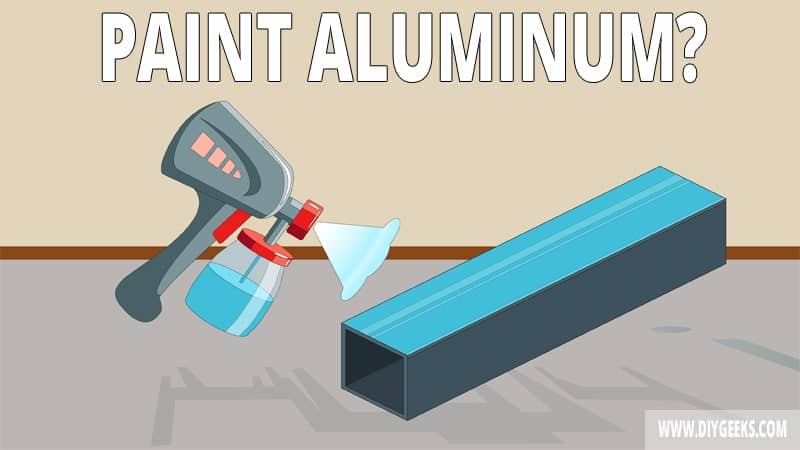Aluminum is a silvery-white lightweight metal that is highly corrosion-resistant.
To paint over aluminum, clean the surface, sand the aluminum, apply self-etching primer, and apply the paint.
Paint can last between 5-10 years over an aluminum surface depending on where the material is placed and whether the paint is sealed or not.
Can You Paint Over Aluminum Without Sanding or Priming?
You can’t paint over aluminum without sanding or priming. Aluminum has a slick and non-porous surface that prevents paint penetration and adhesion.
If you don’t sand or prime the aluminum surface, paint won’t penetrate the surface and remain over the top layer until it peels off. Even if a small paint amount adheres, it will peel off from minimal contact.
Sanding creates tiny pores (holes) and abrades the aluminum surface, helping paint penetrate and adhere better.
A self-etching primer coat adheres to the aluminum surface and etches it, providing a smooth layer for the paint coating to adhere to.
Which Paint Types Can You Apply Over Aluminum?
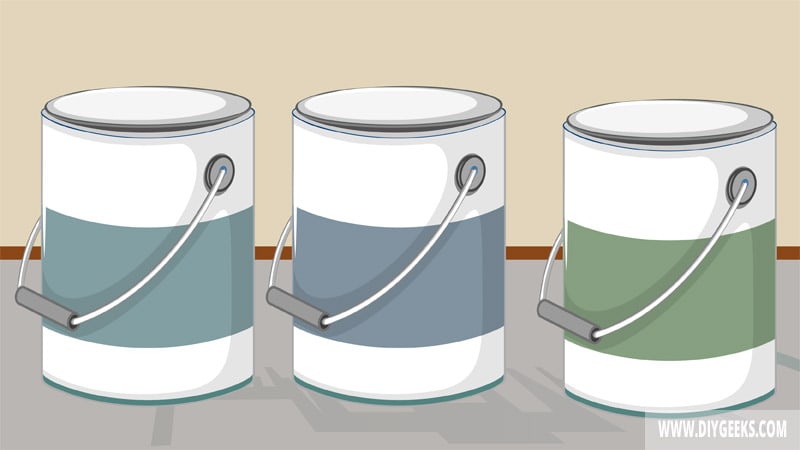
You can use latex or acrylic paint over aluminum surfaces as these paint dry faster and don’t highlight surface scratches or imperfections. You can use oil-based paints too but their glossy finish can highlight imperfections.
Water-based paint has good adhesive qualities and creates a matte (flat) finish that covers imperfections, bumps, or scratches. Aluminum is a light metal and develops scratches and marks more easily, so you need a paint finish that hides these imperfections.
However, water-based paint has poor durability and won’t protect the underlying surface from moisture, water, or other damage. So, you must seal the paint with a moisture-resistant sealer, such as polyurethane.
How To Paint Aluminum?
To paint aluminum, do the following things.
- Clean the Surface.
- Sand the Aluminum.
- Apply Self-etching Primer.
- Apply Paint.
The tools you need for this project are listed below.
- Self-etch primer
- Latex or acrylic spray paint
- Sandpaper.
- A portable vacuum or duster
- Rags
- Enamel sealer
- Mineral spirits or turpentine
- A drop sheet
1. Clean the Surface
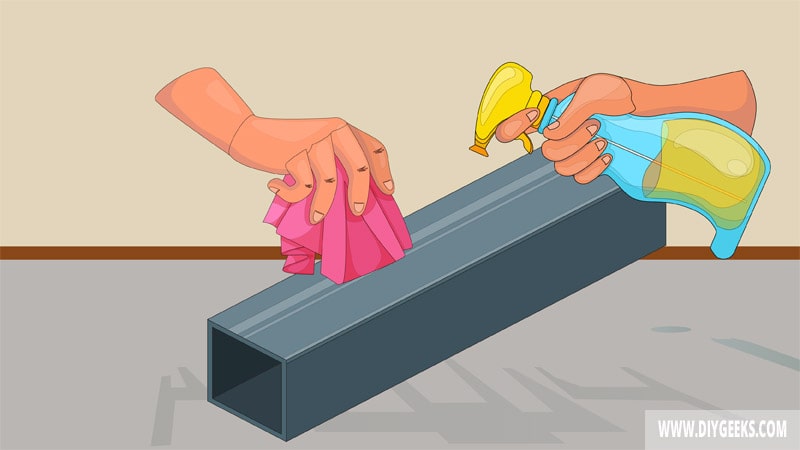
Clean the aluminum surface with soapy water to remove dirt, dust, debris, and stains that can prevent the paint from adhering. For stubborn stains, pour mineral spirits onto a clean rag and use it to wipe the surface.
When the aluminum is clean and dry, remove its attachments and fittings (if any). For instance, if you paint aluminum cabinets, remove the handles and metal fittings so you don’t paint them.
If the aluminum is already painted or sealed, remove the existing finish first with a paint-stripping compound. Apply a paint-stripping compound, wait around 20 minutes, and scrape the finish from the surface.
2. Sand the Aluminum
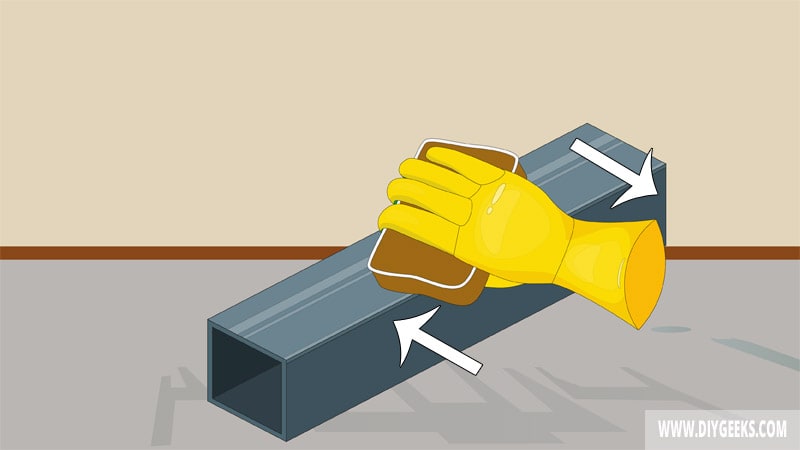
Sand the aluminum with fine-grit sandpaper (220-grit) to remove imperfections, dirt, dust, create tiny pores (holes) that the paint can penetrate, smoothen the surface, and make it paint-ready.
If you don’t sand the aluminum, the paint finish won’t be smooth and can peel off due to poor adhesion.
3. Apply Self-Etching Primer
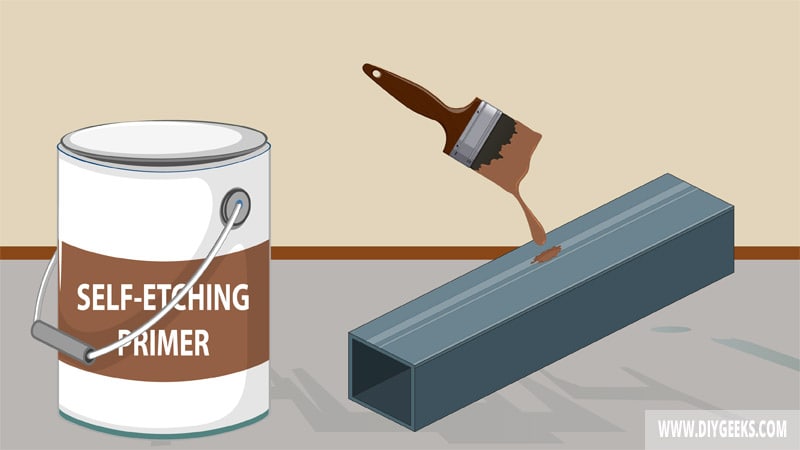
Apply one (1) self-etching primer coat over the aluminum surface. A self-etching primer etches on non-porous metal surfaces and enhances the paint adhesion.
4. Apply The Paint
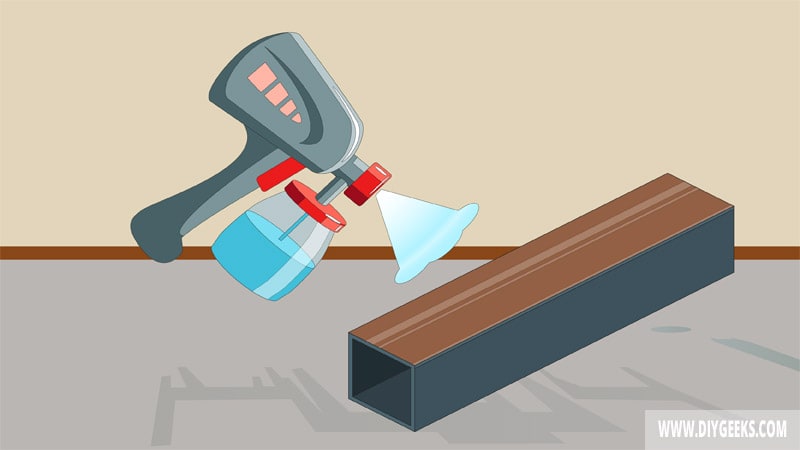
Apply 3-4 thin paint coats over the aluminum surface. Wait until one coat dries before applying the next one.
For outdoor aluminum surfaces, seal the finish with polyurethane or varnish to protect it from outdoor elements.
Does Paint Damage Aluminum?
Paint doesn’t damage aluminum instead it protects it from different elements by creating a barrier over it. A sealed paint coating creates a moisture-resistant layer over the aluminum and protects it from moisture, water, scratches, and other elements.
Aluminum is one of the few metals that is naturally corrosion-resistant. This metal goes through a molecular change to develop a corrosion-resistant oxide coating. This coat prevents the surface from reacting to moisture and prevents rust or corrosion.
If you apply a high-quality paint and sealer over the aluminum surface, the metal will last longer without getting damaged or corroded.
How Long Does Paint Last on Aluminum?
Paint lasts between 5-10 years on aluminum surfaces. The exact time paint lasts on aluminum depends on where the aluminum is placed, and whether the paint is sealed or not.
For instance, paint lasts longer over indoor aluminum surfaces because it isn’t exposed to outdoor weather elements that can remove it.
Paints sealed with a moisture-resistant sealer last longer than paints that aren’t sealed. The sealer produces a moisture-resistant barrier over the paint and helps it last longer.
To make the paint last longer on aluminum, do the following things.
- Clean and maintain the finish regularly.
- Repair dents and damages on the aluminum before applying the paint.
- Always sand and prime before applying paint.
- Seal the surface with a high-quality sealer.
